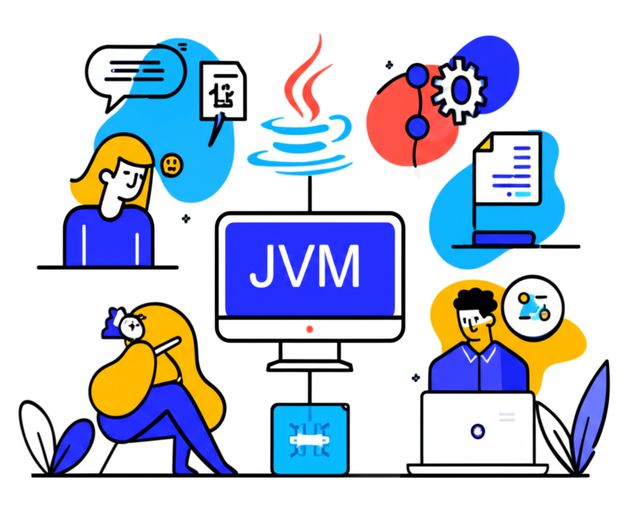Java Virtual Machine (JVM)
The Java Virtual Machine (JVM) is a virtual machine that provides a runtime environment for Java bytecode to be executed. It is an essential component of the Java platform and is responsible for managing the execution of Java programs and providing a secure and reliable environment for them to run.
JVM Architecture
The JVM is a stack-based virtual machine, which means that it uses a stack to manage the execution of Java programs. The stack is a data structure that stores the method calls and their parameters, as well as the local variables of the methods. The JVM also has a heap, which is a memory area that stores the objects created by the program.
The JVM is a platform-independent virtual machine, which means that it can run on any operating system that supports the Java runtime environment. This makes it possible to write Java programs once and run them on any platform, without having to recompile them for each platform.
Benefits of Using the JVM
There are many benefits to using the JVM for running Java programs. Some of the most important benefits include:
- Security: The JVM provides a secure environment for running Java programs. It verifies the bytecode before executing it, and it also enforces access controls to protect the data and resources of the program.
- Reliability: The JVM is a reliable platform for running Java programs. It provides automatic memory management, which helps to prevent memory leaks and other errors. The JVM also provides exception handling, which allows programs to recover from errors gracefully.
- Portability: The JVM is a platform-independent virtual machine, which means that it can run on any operating system that supports the Java runtime environment. This makes it possible to write Java programs once and run them on any platform, without having to recompile them for each platform.
- Performance: The JVM is a high-performance virtual machine that can run Java programs efficiently. It uses a number of techniques to improve performance, such as just-in-time compilation and garbage collection.
Applications of the JVM
The JVM is used to run a wide variety of applications, including:
- Web applications: The JVM is a popular platform for running web applications. It is used by many large websites, such as Google, Amazon, and Facebook.
- Desktop applications: The JVM is also used to run desktop applications. Some of the most popular desktop applications that use the JVM include IntelliJ IDEA, Eclipse, and NetBeans.
- Mobile applications: The JVM is also used to run mobile applications. Some of the most popular mobile applications that use the JVM include Minecraft, Candy Crush Saga, and Angry Birds.
- Enterprise applications: The JVM is used to run enterprise applications. Some of the most popular enterprise applications that use the JVM include SAP, Oracle, and IBM WebSphere.
Careers in JVM
There are many careers that involve working with the JVM. Some of the most popular careers include:
- Java developer: A Java developer is responsible for writing and maintaining Java programs. They use the JVM to run and test their programs.
- JVM architect: A JVM architect is responsible for designing and implementing the JVM. They work on improving the performance and reliability of the JVM.
- Java performance engineer: A Java performance engineer is responsible for optimizing the performance of Java programs. They use tools and techniques to identify and fix performance bottlenecks.
- Java security engineer: A Java security engineer is responsible for securing Java programs and applications. They work on identifying and mitigating security vulnerabilities.
Online Courses on the JVM
There are many online courses that can help you learn about the JVM. Some of the most popular courses include:
- Java Virtual Machine (JVM) Internals: This course provides an in-depth look at the internals of the JVM. You will learn about the JVM architecture, class loading, garbage collection, and performance tuning.
- JVM Performance Tuning: This course teaches you how to tune the JVM for performance. You will learn about the different JVM settings and how to use them to improve the performance of your Java programs.
- Java Security: This course teaches you about the security features of the JVM. You will learn about the different security threats and how to protect your Java programs from them.
Online courses can be a great way to learn about the JVM. They provide a flexible and affordable way to learn at your own pace. They also provide access to a community of experts who can help you with your learning.
However, it is important to note that online courses alone are not enough to fully understand the JVM. You will also need to practice using the JVM and working with Java programs. You can do this by building your own Java programs or by contributing to open source Java projects.


